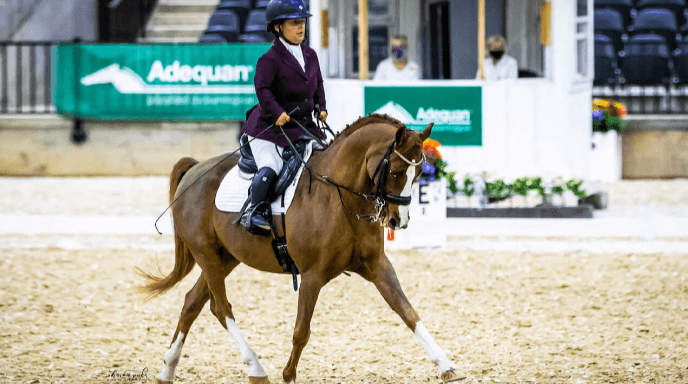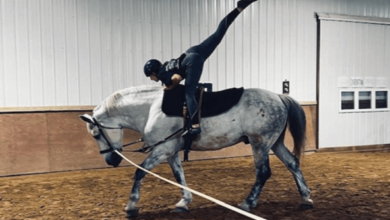What are the different categories of para-equestrian sports?

Introduction
Para-equestrian sports are a testament to the resilience and dedication of athletes with disabilities. These sports provide a platform for individuals to engage in equestrian activities, showcasing their skills and competing at various levels. This article explores the different categories of para-equestrian sports, offering a comprehensive understanding of this inspiring field.
Understanding Para-Equestrian Sports
Para-equestrian sports are specifically designed for athletes with physical disabilities, allowing them to compete in various equestrian disciplines. These sports are governed by the same rules as able-bodied competitions, with modifications to accommodate the needs of the participants. The primary aim is to ensure fair and competitive opportunities for all athletes.
History and Evolution of Para-Equestrian Sports
The history of para-equestrian sports dates back several decades. The first formal competition took place in the 1970s, and since then, the sport has evolved significantly. With increased recognition and support, para-equestrian sports have grown in popularity, culminating in their inclusion in the Paralympic Games.
Categories of Para-Equestrian Sports
There are several categories within para-equestrian sports, each catering to different disciplines and abilities. These categories ensure that athletes can participate in a manner that best suits their skills and physical capabilities. Let’s explore these categories in detail.
Dressage in Para-Equestrian Sports
Dressage is a prominent category in para-equestrian sports. It involves the execution of predetermined movements, known as “tests,” which are performed at different levels of difficulty. Athletes are judged on their precision, smoothness, and overall performance. Para-dressage includes various grades, ensuring a level playing field for athletes with different types and degrees of disabilities.
Para-Driving
Para-driving is another exciting category where athletes control a horse-drawn carriage. This discipline tests the athlete’s ability to navigate courses with precision and speed. Para-driving competitions are divided into different classes based on the athletes’ impairments, allowing for fair competition.
Vaulting for Para-Equestrians
Vaulting, often described as gymnastics on horseback, is also available to para-equestrian athletes. This category involves performing acrobatic movements on a moving horse. Para-vaulters are graded based on their physical abilities, ensuring that they compete with peers of similar capabilities.
Para-Equestrian Reining
Reining is a western riding discipline that showcases the rider’s control over the horse through a series of maneuvers. Para-equestrian reining competitions are tailored to the athletes’ abilities, with modifications made to the traditional reining patterns to accommodate different disabilities.
Classification in Para-Equestrian Sports
Classification is a critical aspect of para-equestrian sports. It ensures that athletes compete against others with similar levels of ability. Classifications are based on the type and severity of the disability, with each category having specific criteria and grading systems.
International Para-Equestrian Competitions
Athletes in para-equestrian sports have the opportunity to compete at the international level. These competitions include the Paralympic Games, the World Equestrian Games, and various other global events. International competitions provide a platform for athletes to showcase their talents on a grand stage.
Paralympic Equestrian Events
The Paralympic Games feature para-dressage as a key equestrian event. Athletes from around the world compete in various grades, striving for excellence and demonstrating their skills. The inclusion of para-equestrian sports in the Paralympics highlights the importance and recognition of these athletes.
World Equestrian Games and Para-Equestrian Events
The World Equestrian Games (WEG) also feature para-equestrian events. These competitions bring together top athletes from different nations, competing in dressage and driving. The WEG provides a prestigious platform for para-equestrian athletes to compete at the highest level.
National Competitions and Para-Equestrian Categories
In addition to international events, many countries host national para-equestrian competitions. These events are crucial for the development and recognition of athletes at the national level. National competitions often serve as qualifiers for international events, providing athletes with valuable competitive experience.
Training for Para-Equestrian Sports
Training for para-equestrian sports requires a specialized approach. Athletes work with coaches to develop their skills and adapt their techniques to suit their abilities. Training programs are tailored to the individual needs of the athletes, ensuring that they can perform at their best.
Adaptive Equipment in Para-Equestrian Sports
Adaptive equipment plays a vital role in para-equestrian sports. From specialized saddles to reins and stirrups, these modifications enable athletes to ride and compete effectively. The use of adaptive equipment ensures that athletes can participate safely and comfortably.
Role of Coaches and Trainers in Para-Equestrian Sports
Coaches and trainers are essential to the success of para-equestrian athletes. They provide guidance, support, and expertise, helping athletes to hone their skills and prepare for competition. The relationship between athlete and coach is crucial, fostering trust and mutual respect.
Benefits of Participating in Para-Equestrian Sports
Participating in para-equestrian sports offers numerous benefits. These include physical fitness, mental well-being, and the development of discipline and resilience. Athletes also gain a sense of community and belonging, forming bonds with fellow competitors and supporters.
Challenges Faced by Para-Equestrian Athletes
Despite the many benefits, para-equestrian athletes face several challenges. These can include access to training facilities, funding, and the need for specialized equipment. Overcoming these obstacles requires determination and support from the wider community.
Success Stories in Para-Equestrian Sports
There are many inspiring success stories in para-equestrian sports. Athletes who have overcome significant challenges to achieve their goals serve as role models and sources of inspiration for others. These stories highlight the possibilities and achievements within para-equestrian sports.
Support and Sponsorship for Para-Equestrian Athletes
Support and sponsorship are critical for the growth and development of para-equestrian athletes. Sponsorships provide financial assistance, enabling athletes to access training, equipment, and competition opportunities. Support from organizations and individuals helps to foster a thriving para-equestrian community.
Future of Para-Equestrian Sports
The future of para-equestrian sports looks promising. With increasing recognition and support, more athletes are able to participate and compete at high levels. Continued advancements in adaptive equipment and training methods will further enhance the opportunities for athletes.
Prominent Para-Equestrian Athletes
Several athletes have made significant contributions to para-equestrian sports. These individuals have achieved remarkable success and have become ambassadors for the sport. Their achievements highlight the potential and talent within the para-equestrian community.
Community and Social Impact of Para-Equestrian Sports
Para-equestrian sports have a profound impact on the community and society. They promote inclusivity and diversity, breaking down barriers and challenging stereotypes. The positive social impact of these sports extends beyond the athletes, inspiring and encouraging broader societal change.
Technological Advances in Para-Equestrian Sports
Technological advancements are continually improving para-equestrian sports. Innovations in adaptive equipment, training tools, and competition formats enhance the experience for athletes and spectators alike. Embracing technology ensures the continued growth and evolution of the sport.
Regulations and Safety in Para-Equestrian Sports
Safety is paramount in para-equestrian sports. Strict regulations and guidelines are in place to ensure the well-being of athletes and horses. These regulations cover equipment, training practices, and competition standards, ensuring a safe and fair environment for all participants.
Inclusivity and Diversity in Para-Equestrian Sports
Inclusivity and diversity are core values of para-equestrian sports. The sport strives to provide opportunities for athletes of all backgrounds and abilities, fostering an environment of equality and respect. This commitment to inclusivity ensures that para-equestrian sports remain accessible and welcoming.
FAQs About Para-Equestrian Sports
What are the main categories of para-equestrian sports? The main categories include para-dressage, para-driving, vaulting, and para-reining. Each category is tailored to accommodate different abilities and disciplines within equestrian sports.
How are athletes classified in para-equestrian sports? Athletes are classified based on their physical abilities and the nature of their disabilities. Classifications ensure fair competition by grouping athletes with similar levels of ability.
What adaptive equipment is used in para-equestrian sports? Adaptive equipment includes specialized saddles, reins, stirrups, and other modifications that enable athletes to ride and compete safely and effectively.
Are there international competitions for para-equestrian sports? Yes, para-equestrian athletes compete in international events such as the Paralympic Games and the World Equestrian Games. These competitions provide a global platform for showcasing their talents.
What are the benefits of participating in para-equestrian sports? Benefits include physical fitness, mental well-being, the development of discipline and resilience, and a sense of community and belonging among athletes and supporters.
What challenges do para-equestrian athletes face? Challenges include access to training facilities, funding, and the need for specialized equipment. Overcoming these obstacles requires determination and community support.
Conclusion
Para-equestrian sports embody the spirit of inclusivity and determination. By providing a platform for athletes with disabilities to compete and excel, these sports inspire and challenge perceptions. The different categories of para-equestrian sports offer varied and exciting opportunities for athletes to showcase their skills and achieve their goals. As the sport continues to grow and evolve, it remains a testament to the resilience and passion of its participants.







